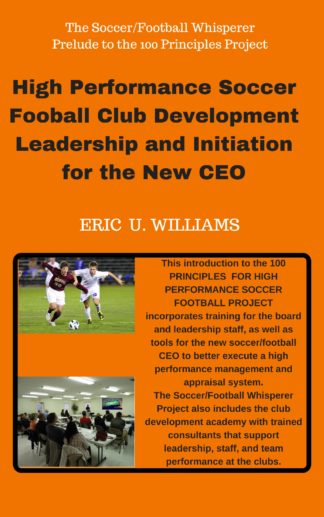 Every club that has been consistently successful over many decades is already observing the majority of the Principles, whether or not they are consciously aware of it, or can describe it as presented by the Whisperer. They will confirm this assertion when confronted, so others are advised to never ‘kick against the prick’. This biblical expression will appear again in a Wilguard Gladiator safety product focus, advertising a special tool for protecting a personal item in the male version of the game. Lol is not appropriate here!
Every club that has been consistently successful over many decades is already observing the majority of the Principles, whether or not they are consciously aware of it, or can describe it as presented by the Whisperer. They will confirm this assertion when confronted, so others are advised to never ‘kick against the prick’. This biblical expression will appear again in a Wilguard Gladiator safety product focus, advertising a special tool for protecting a personal item in the male version of the game. Lol is not appropriate here!
With all that has been said about excellence in coaching, it is not the sole responsibility of the coaching team, on their own, to create the right conditions for high performance, and ultimately championship success at the club. It is expected that they must be involved, but it is too much to ask them to do diagnostic reviews, determine program curriculum design, implement support systems, manage, supervise, assess, coach, value, and evaluate their own work….while the club leaders are focusing on getting a better coach, rather than ensuring that the critical elements of the Principles are imbedded at the club…in this new dawn!
The Principles are binding, yet not confining and are pliable …once each principle is understood, tried and tested, it will become a guiding staple in the Clubs ‘ and coaches’ repertoire.
The principles, while providing guidance on playing and performance standards, will not be able to impose confining strictures on the players, enough to effectively create robotic responses. No matter how well the teams respond to the similar instructions issuing from these 100 Principles, it is certain that no two teams or games will ever be the same, as the dynamic situational differences will demand that performances will always manifest in different ways, at various levels, along separate continua of individual cognitive and physical abilities.
Also, the players will have different respond strength (negative/positive) to the changing aura (affective socio-psychological construct that impacts player responses) within the club at different times. Above all, the coaches must appreciate and be ready to deal with these intangible factors that can significantly reduce player confidence and performance. The functional variables in team play and competition will be constantly changing and quite difficult to pin-down, track, or manage without the stabilizing centrality of the Principles. The club and the coach must find accord around the 100 Principles and work from there to change the failing culture of the club into a successful venture.
The most difficult job for the coach is to understand the potential effects of the Clubs’ changing aura and getting it, as well as the players, adjusted to a functional balance, and be able to maintain a narrow operating band of responses from his/her players, to the specific instructions to effectively apply the principles in their repertoire and game. Communicating the principles to effect will be critical for the success of a coach, and by extension the team. So for the coach, his best ally and stabilizer will be inside the cover-all dome of these principles.
The managers and coaches must also be made aware of the other factors embedded in the performance environment that can dash their best efforts. These can range from prior inculcated pervasive negativisms, to high acceptance of unforced errors, and sloppiness in team development and preparation, that has infected the clubs’ soccer/football psyche and culture. Other factors include the absence of (SFW/PMAS) appropriate training of the management resulting in weaknesses within the club’s structure, systems and leadership, which marginalizes the management’s status quo of influence and social facilitation.
The sum of each player’s ability along with the synergy the coaching can create through effective skill-set and social combinations, can contribute to the outcomes in many ways that are yet to be identified, negative or positive.
The sub sets of socio-grams within the team and the club must be figured out and redressed for rebuilding positive synergies. A simple survey of each player picking five including self, and then eleven excluding self, can give otherwise unattainable insights to the coach. There are other factors operating that can reach back to each player’s date of birth, through their life experiences and prior coaching, even their health and nutritional history, as well as their unique self-image and mental/intellectual abilities. Say what?
A little bemusement is not a sign of disaster, only that there is much more for the club and coaches to cover outside of this seminal work.
Above all, the physical, social and emotional status of each player on match day is paramount, and sums up the prior effort of the club to win the game…. the coach will not be able to do all these things alone.
Without these 100 Principles firmly in their grasp through reading, internalization, assimilation and application, our younger club leaders’, managers’ and coaches’ interpretation of play, and their attempts at designing remedial activities, will be far less than bullet proof. And this will remain so, even with the most sophisticated technology at their disposal. This book will help clubs to determine with certainty; the performance gaps that they will need to fill, and will inform to facilitate the application of new technologies, to make them more user-friendly, and result-oriented



